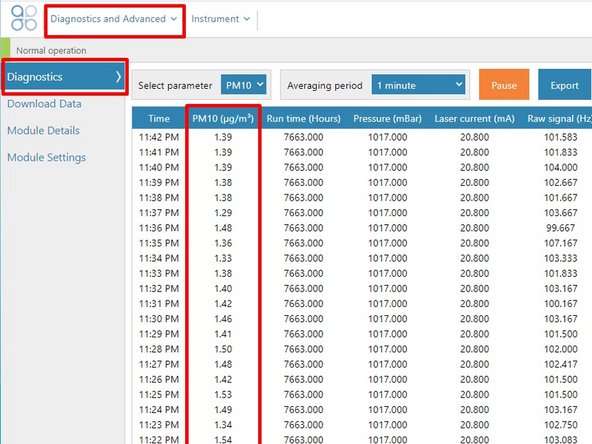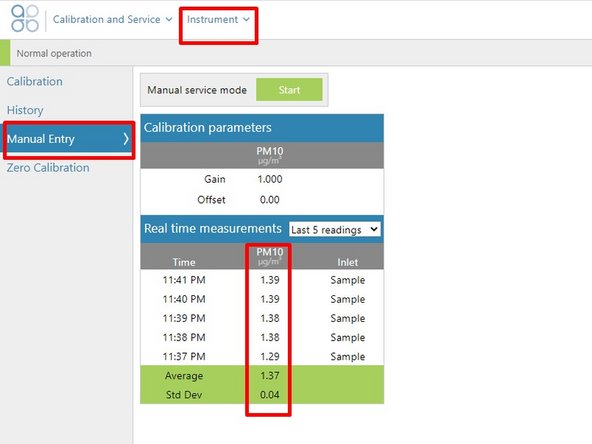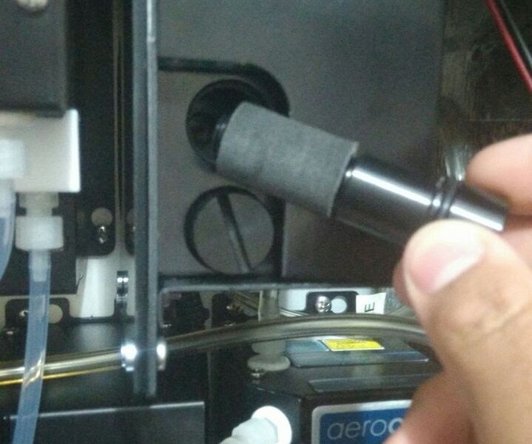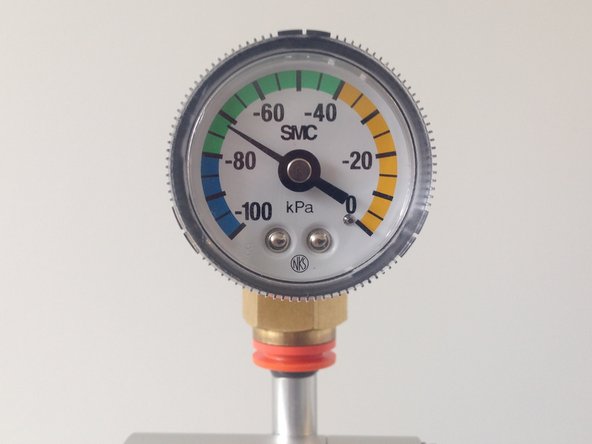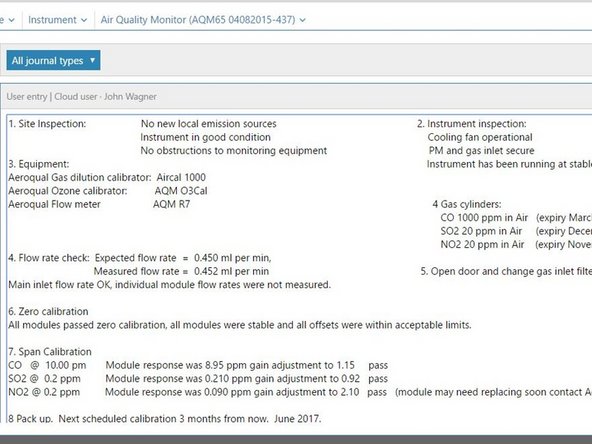Introduction
Use this procedure to check the zero baseline of your particle monitor.
The function of the zero filter is to remove particulate out of the air that’s being drawn into the particle inlet.
This means all the air passing through the particle monitor should be free of particulates and particle readings should drop to 0 or close to 0 (within the range ±3 µg/m3).
If you’re seeing negative numbers larger than -3 µg/m3 in your data, it’s likely the auto zero cycle isn’t working correctly.
Note: You can’t fix the zero baseline by adjusting the offset. This is because the particle monitor has an auto zero function that conflicts with the offset function.
To understand how often you should perform this service activity, click here.
Tools
No tools specified.
Parts
-
-
Enter service mode so any fluctuations in the data caused from this activity can be excluded from air quality reports.
-
-
-
You must do this during normal sample mode, with 2.0 LPM sampling into the particle inlet.
-
Remove the TSP head from the top of your monitor’s sharp cut cyclone.
-
Attach the flow adaptor and zero filter.
-
Leave the zero filter in place for 5 minutes.
-
-
-
To view particle concentrations, open the Diagnostics and Advanced app and select Diagnostics from the side menu.
-
Alternatively, use the Calibration and Service app and select Manual Entry from the side menu.
-
While the zero filter is attached, the PM µg/m3 values for particle monitor channels should be 0 or close to 0 (between ±3 µg/m3).
-
Compare the values with those taken during the auto zero cycle check. They should be the same or very similar. If they're different, it’s possible the sample filter is too dirty or there is a problem with the auto zero cycle.
-
-
-
If you’re seeing particle matter concentrations larger than ±3 µg/m3, run the auto zero cycle.
-
If the auto zero cycle confirms a 0.2 to 0.6 positive flow from the inlet, check the filters are clean and properly installed and then leak check the particle monitor using the vacuum gauge.
-
If this doesn't resolve the issue, contact Technical Support.
-
For further support, contact Technical Support.
For further support, contact Technical Support.
Cancel: I did not complete this guide.
2 other people completed this guide.



